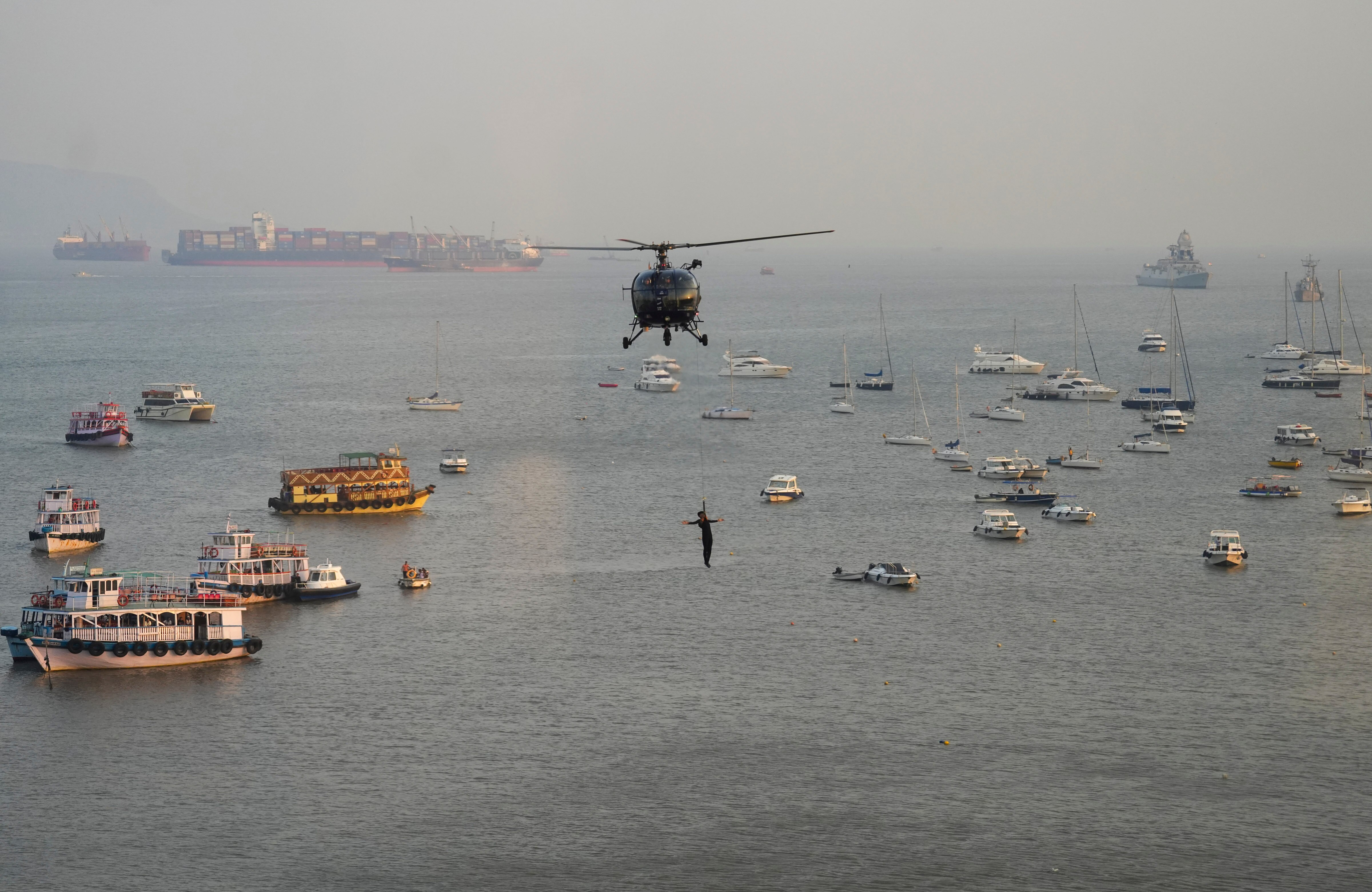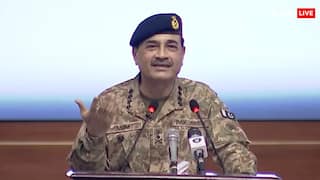Opinion: In The Shadows, Never An Easy Day — The Passion Of Indian Navy’s Elite MARCOS, And The Price They Pay

Hidden beneath the tranquil surface of the Indian Ocean, a silent force guards the country’s maritime frontiers. The Marine Commandos or MARCOS, the Indian Navy’s elite special forces, are a testament to courage, precision and unwavering dedication. These highly trained commandos, operating in the most challenging environments, are the tip of the Navy spear, and the most potent shield.
One has witnessed first-hand the transformation of ordinary men into some of the most highly trained warriors in the world. For sailors and officers coming from all walks of naval life, the MARCOS selection process is more about rejection than selection. The seven-day-long aptitude test is a true trial for one’s resilience, which only 15% to 20% volunteers can clear. Those selected through the aptitude test have to undergo two-weeks’ screening at the Naval Special Warfare Training and Tactical Centre (NSWTTC) in Goa. At the end, just 10 to 15 men remain. With their character, endurance and tolerance, they will probably complete the entire training.
MARCOS training comprises marksmanship, underwater demolitions, improvised explosives, combat diving, close-quarter combat, counterterror operations, all waterborne activities, endurance running and swimming, as well as the latest communication equipment and specialised weapons. The commandos undergo training in heli-borne operations, submarine-borne operations, and operations launched from the surface of the sea. Their training in security operations is about offshore assets security and VIP security.
Those who can clear the rigorous training pass out from the NSWTTC after an oath-taking ceremony. The passouts put a cut in their thumb using their ‘Commando Dagger’ to take the pledge to serve the country until the last drop of their blood.
There are no easy days in the life of a commando. The training schedule for them is a daily affair. Even when posted in counterinsurgency areas, they continue their training sessions to stay fit for challenges in all terrains.
ALSO READ | China’s Covert Support To The Houthis: A Strategic Gamble In The Red Sea
Spectrum of Operations
Bilateral Exercises
Exercise Sangam is a joint naval special forces exercise between the Indian Navy MARCOS and the US Navy SEALs. It focuses on maritime special operations, including counterterrorism, hostage rescue, and maritime interdiction.
Having trained in close coordination with the commandos, and witnessed the most rigorous part of their training from very close quarters, one can still vividly remember how amazingly we fared in joint drills with the US Navy SEALs during a 2003 camp in a sleepy coastal town of Maharashtra. The agility and resilience of our MARCOS surprised the invincible US Navy SEALs as we competed with them in various drills.
They also take part in bilateral exercises with other friendly nations, such as France, Russia, and Australia. These exercises involve a range of activities, including joint training, tactical drills and operational planning.
Multilateral Exercises
The MARCOS take part in Exercise Milan, which is a major naval drill involving the navies of various countries.
RIMPAC (Rim of the Pacific) is the world’s largest international maritime exercise, where the Indian Navy, including the MARCOS, is a regular participant. The commandos here engage in specialised operations, such as amphibious landings, counterterrorism drills, and maritime interdiction.
The MARCOS’ participation in TROPEX (Theatre Readiness Operational Exercise), Sea Vigil, Poorvi Lehar, various anti-submarine warfare exercises, amphibious operations, and search-and-rescue drills ensures a high level of operational readiness to enhance the Navy’s ability to protect the country’s maritime interests.
ALSO READ | How Indian Navy Anchors Stability Across The Indian Ocean Region And West Asia
Mission Deployments
Counterinsurgency And Anti-Terrorist Operations
The MARCOS have been involved in several missions and deployments over the years, and are among the top recipients of gallantry awards in the Indian Navy.
In the late 1980s, during the peak of the LTTE insurgency in Sri Lanka, the MARCOS were deployed under Operation Pawan to assist the Indian Peace Keeping Force (IPKF), earning them the second highest military decoration, the Maha Vir Chakra.
The MARCOS, famously known as ‘Dadhiwala Fauji’ in the Valley, have been deployed at the Jhelum River and Wular Lake to conduct counterinsurgency operations. The 26/11 Mumbai terror attacks saw them at the forefront of neutralising the terrorists who had infiltrated the city. The Mumbai terror attacks served as a stark reminder that India’s security threats are not confined to its borders but can emerge at any moment, even in its financial capital.
Anti-Piracy Missions In IOR
The waters of the Indian Ocean stretch vast and unforgiving, a domain that has tested the endurance, skill, and resolve of sailors for centuries. But few are as prepared for the rigours of this environment as the MARCOS. Tactical success is not the only goal of these operations. The Indian Ocean Region (IOR) is the gateway to the Indian Navy’s dream of becoming a blue-water navy, and the MARCOS act as its sword arm, necessary for the force to achieve that goal.
They have been leading the Indian Navy’s anti-piracy operations in the Gulf of Aden, off the coast of Somalia, and the piracy-prone areas of the IOR. They have been involved in many search and rescue operations, including the rescue of hostages from hijacked ships.

In an increasingly volatile Indo-Pacific, where piracy, terrorism, and state-sponsored aggression threaten the stability of the region, the role of the MARCOS has never been more critical. They are not just warriors of the sea — they are the sharp edge of India’s naval diplomacy, capable of projecting power and securing peace. A training regimen that is nothing short of brutal underpins their operational readiness.
Their ability to conduct amphibious operations and island defence makes them indispensable in regions like the Andaman and Nicobar Islands, where their presence acts as a deterrent to hostile powers eyeing the region’s critical chokepoints.
India-China Face-Off
Amid the stand-off between India and China in the eastern Ladakh region, the Marine Commandos were deployed at Pangong Tso for waterborne operations and patrolling. Matching the Chinese deployments on the lake, located close to 14,000 feet above sea level, the force deployed new landing docks and equipped the commandos with speed boats for patrolling.
What sets the MARCOS apart is not just their operational versatility but their ability to act as an independent force. They train to operate behind enemy lines, far from reinforcements, relying only on their skills and instincts. This self-sufficiency is key in environments where rapid extraction may not be possible, and it underscores their role as an autonomous strike force within the Indian Navy.
Clandestine Operations
Just to give the reader a glimpse of their clandestine operations and the vast canvas they operate upon, my first Sunday lunch at INS Abhimanyu was with two guys who sported long hippie hairdos and beards that made them look more like taporis from Mumbai than Indian Navy’s Marine Commandos. To this day, this mission and their names remain classified.
This author was fortunate to serve under the legendary leadership of Commander Arvind Singh, MVC. Besides being the Navy’s only Maha Vir Chakra awardee, he was an audacious commander who took some brave decisions and deployed the MARCOS for operations across the spectrum. One can’t claim that people appreciated his ways, but commanders like him are needed to fully operationalise a force with such diverse capabilities.
ALSO READ | MAHASAGAR — Another Strategic Push For India’s Naval Diplomacy In The Indo-Pacific
The Toll Of Being MARCOS
What the public rarely sees is the toll that being a MARCOS commando takes on the individual. Not just the training, but every mission they undertake pushes these men to their physical and mental limits. The operational tempo of MARCOS is intense, and the risk of injury — or worse — is ever-present. These men carry the weight of expectations from their nation, and they do so willingly, knowing that their success often comes at great personal sacrifice.
As someone who has served alongside these men, I have seen the effects of this demanding life. Physical injuries are common, but the psychological toll is equally significant. Many MARCOS operate in environments of extreme isolation, where the margin for error is slim and the consequences of failure are severe. The mental resilience they develop in training sustains them through the most challenging operations, but this resilience often comes at a personal cost.
Yet, despite these challenges, there is a sense of pride and purpose that permeates the MARCOS ranks. They understand they are not just soldiers — they are protectors of India’s vast maritime legacy and its future in the Indo-Pacific. The Indian Navy, and indeed the country, owes much to these men who operate in the shadows, often far from recognition or accolade, but whose work ensures the nation’s security.
Developing Threats, Strengthening Force
As India’s strategic interests in the Indo-Pacific grow, so, too, will the demands placed on the MARCOS. The rise in China’s naval presence in the region, the increasing tensions in the South China Sea, and the proliferation of asymmetric threats will require the commandos to develop their abilities continually. To maintain their edge, ongoing investment in technology, equipment, and training is essential.
The MARCOS’s true strength lies in the men themselves — their resolve, their adaptability, and their unshakeable commitment to protecting India’s maritime interests. They do not conform to the same mould as conventional forces.
As a naval veteran, I can state with confidence that the future of India’s maritime security is in expert hands. The MARCOS will continue to be the force that operates where others cannot, achieving the impossible with the quiet professionalism that defines their elite status. Their motto, ‘The Few, The Fearless’, is not just a tagline — it is a way of life for this league of extraordinary gentlemen.
The writer is a Navy veteran and military historian.
[Disclaimer: The opinions, beliefs, and views expressed by the various authors and forum participants on this website are personal.]


























